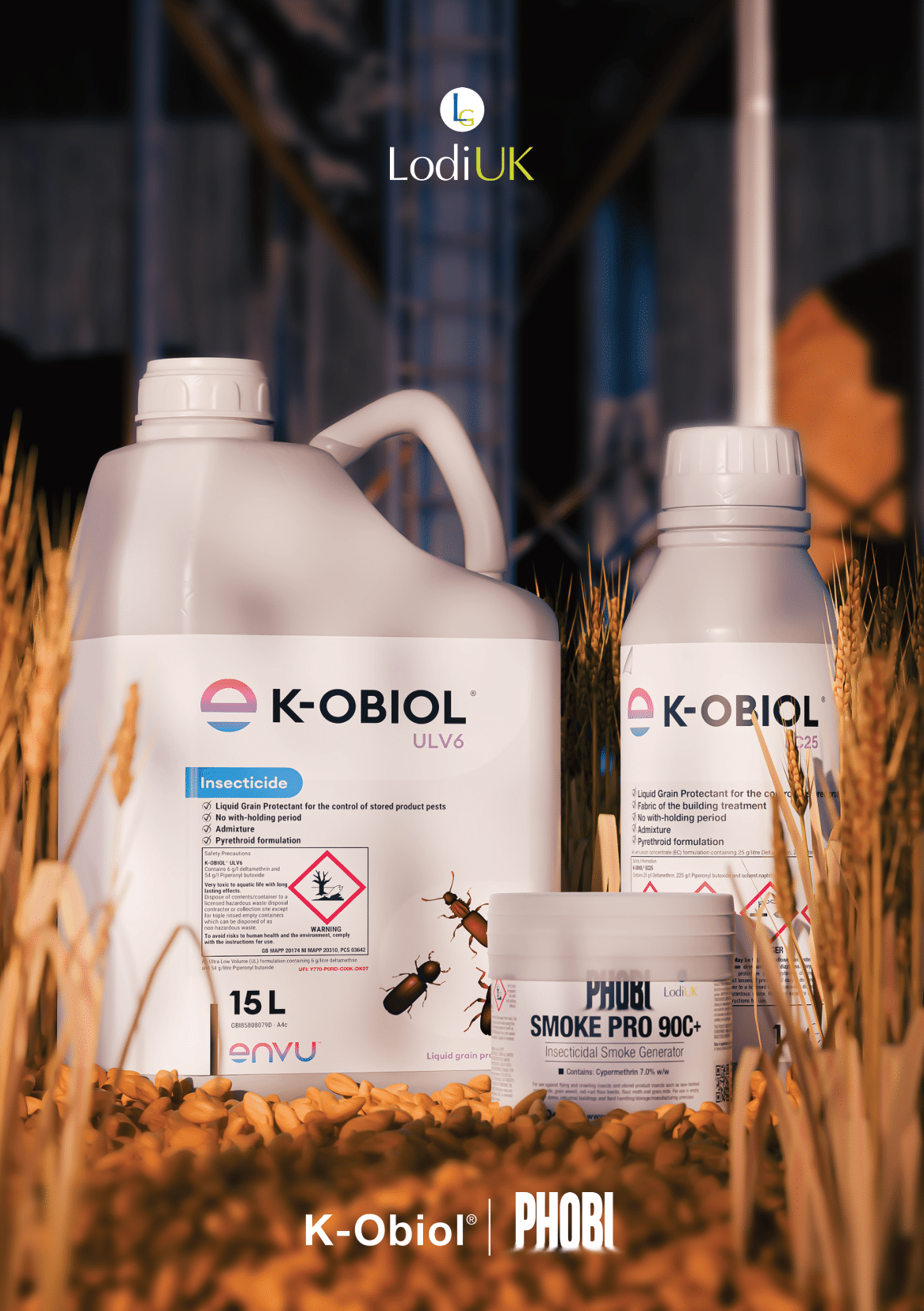
Prioritise Grain Store Preparation to Preserve Profit
Stored grain pests can wreak havoc, that’s why investing time in preparing grain stores ahead of harvest is essential, to help prevent infestations from the insects that jeopardise grain quality, ultimately reducing yields and the profit potential.
“If buildings are not thoroughly prepared in advance of storage, the long-term consequences can be an economical and logistical nightmare,” warns Ken Black, Account Manager at Envu.
Planning and an integrated, proactive approach to grain store preparation is key to protecting future harvests and reducing the risk of costly insect damage. The optimum time to prepare stores is 6-8 weeks before incoming grain, as this allows ample time to treat any lingering pests, in advance of filling the store.
“Primary insect pests, like grain weevils and saw-toothed grain beetles, that can lurk in the store from the previous year, will quickly attack any new stored crop. They will leave hollowed-out grains, which can drastically affect a crop’s farm gate value,” says Ken. “Damage from these pests will also leave stored grain vulnerable to secondary insects like the red rust flour beetle. In turn, insect activity creates ‘hotspots’ in any grain in the store, leading to the growth of damaging mould and fungi.
“The high risk of pest damage can be easily avoided with good cleaning and treatment measures before any new grain arrives,” stresses Ken. “Cleaning stores thoroughly will help remove any pests that have survived from the previous harvest and will also mean that any treatments are far more effective.”
Cleaning – Best Practice for Grain Stores
“The earlier you can prepare a store by thoroughly cleaning it out and monitoring for insect activity - the better,” Ken asserts. “Systematically clean ledges and dispose of any old dust and debris as quickly as possible, well away from the store. Don’t leave vacuums within the store as the pests can easily crawl out.
“Remember, it’s easy to overlook some areas that can harbour insects over the winter - such as roof space, ventilation tunnels, underfloor ducts, pipes and crevices. Removing grain and dust from these areas will eliminate insect habitats and make the environment as hostile as possible for any potential pests,” says Ken.
Monitoring For Insects is Crucial
Monitoring is an essential part of the grain store preparation process. “Once thoroughly cleaned, the use of sticky pheromone traps is crucial because these can indicate if any pests are still present. These should be placed in corners and at wall-floor junctions every five metres around the store and checked on a weekly basis,” Ken advises.
Monitoring traps can confirm whether insect populations have been entirely eliminated within the store. They will highlight whether or not there is a requirement for the use of an insecticide treatment post-harvest.
“No evidence of insect pests after cleaning and disinfection is a good sign,” Ken suggests. “However, if insects do persist after the cleaning programmes, consider treating the store with a preventative, residual insecticide like K-Obiol™.”
“Applying a storage building treatment such as K-Obiol™ EC25, six weeks before harvest, will control any active insect pests left in the store, including saw-toothed grain beetles, grain borers and grain moths, while providing two months protection to the fabric of the building.”
Protecting Grain Stores with K-Obiol™
With unrivalled efficacy against the most common insect pests, K-Obiol™ will provide the highest level of protection for grain store facilities and valuable stored grain. Proven to be highly effective, K-Obiol™ is available in two formulations, both provide preventative and curative protection against stored product insects and will prevent damage for up to 12 months.
K-Obiol™ is approved for use on all cereal grains including wheat, barley, maize, rice, oats and triticale and is accepted for use by the Brewing Research International (BRI), the National Association of British and Irish Millers (NABIM) and the Trade Assurance Scheme for Combinable Crops (TASCC).
When applied at its recommended rate, the residue level of K-Obiol™ is four times lower than the Maximum Residue Limit (MRL) for grain (0.25mg/kg). K-Obiol™ is a low odour formulation that has no effect on seed germination; and, as it has no withholding period, any grain treated with the product can be processed straight away.
To find out more about how K-Obiol™ can protect your harvest this season visit https://www.lodi-uk.com/agricultural-products/stored-grain-protection.





